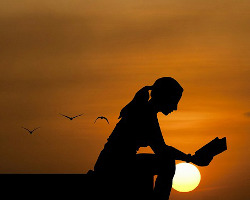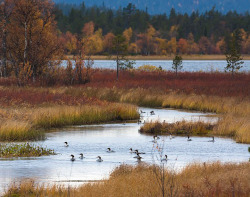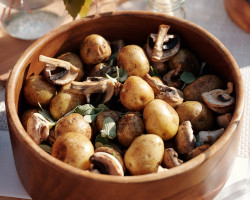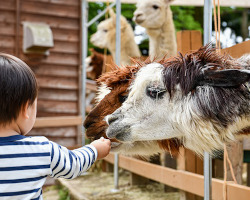 March is National Reading Month and thus an excellent time to celebrate the joys and wonders of reading. Reading is a fundamental skill that enriches us in countless ways; for some of us, reading a great book is like welcoming a new friend into our lives. The freedom to choose what you want to read is exciting and empowering and yet this freedom is being challenged at school and public libraries across the country in record numbers. We all have things we have to read for work and/or school and those documents are important, instructive, and even life changing. But there is something about choosing your own books that harkens back to our early days as a kid standing in front of the children’s section in our local library and reaching for that title that somehow spoke to us saying “Read me!” So exercise your right to read whatever you want by picking up a book of your choice and reading a few minutes each day. To start you out, have a look at the bookish suggestions on our WU Reads Reading Guide.
March is National Reading Month and thus an excellent time to celebrate the joys and wonders of reading. Reading is a fundamental skill that enriches us in countless ways; for some of us, reading a great book is like welcoming a new friend into our lives. The freedom to choose what you want to read is exciting and empowering and yet this freedom is being challenged at school and public libraries across the country in record numbers. We all have things we have to read for work and/or school and those documents are important, instructive, and even life changing. But there is something about choosing your own books that harkens back to our early days as a kid standing in front of the children’s section in our local library and reaching for that title that somehow spoke to us saying “Read me!” So exercise your right to read whatever you want by picking up a book of your choice and reading a few minutes each day. To start you out, have a look at the bookish suggestions on our WU Reads Reading Guide.
For information about censorship see: The American Library Association’s Fight Censorship site: https://www.ala.org/advocacy/fight-censorship



 In 1994, Rodney Wilson, a high school teacher in Missouri, decided that a month should be dedicated to celebrating and exploring gay and lesbian history. Along with other teachers and community leaders, they chose October to coincide with National Coming Out Day, which falls on October 11th. Several national organizations endorsed the idea and in 2006, Equality Forum, “a national and international LGBT civil rights organization with an educational focus,” took on the responsibility for coordinating the month-long celebration. LGBTQ+ History Month provides us with the opportunity to recognize and discover the vital role of gay, lesbian, bisexual, and transgender people in American history. Thirty-one important lesbian, gay, bisexual or transgender individuals are highlighted and celebrated throughout the month; this year, Oregon’s Governor, Kate Brown, was chosen as one of these icons and her achievements will be honored on October 10th. In celebration of LGBTQ+ History Month, checkout these recently published books listed on our
In 1994, Rodney Wilson, a high school teacher in Missouri, decided that a month should be dedicated to celebrating and exploring gay and lesbian history. Along with other teachers and community leaders, they chose October to coincide with National Coming Out Day, which falls on October 11th. Several national organizations endorsed the idea and in 2006, Equality Forum, “a national and international LGBT civil rights organization with an educational focus,” took on the responsibility for coordinating the month-long celebration. LGBTQ+ History Month provides us with the opportunity to recognize and discover the vital role of gay, lesbian, bisexual, and transgender people in American history. Thirty-one important lesbian, gay, bisexual or transgender individuals are highlighted and celebrated throughout the month; this year, Oregon’s Governor, Kate Brown, was chosen as one of these icons and her achievements will be honored on October 10th. In celebration of LGBTQ+ History Month, checkout these recently published books listed on our  What do potatoes, mushrooms, and rice have in common? Besides being delicious (depending on who you talk to, of course) and nutritious, these three food sources share the same appreciation month. That’s right–September is National Potato Month, National Mushroom Month, and National Rice Month. Who knew? And did you know that potatoes are grown in all 50 states? And although often considered a vegetable, a mushroom is neither a plant nor animal. In the world of biology, mushrooms make up their own kingdom–Fungi! When it comes to rice, the average American eats 27 pounds of rice a year. Rice constitutes 20% of the world’s dietary energy supply, edging out wheat at 19%. Food scarcity is a growing concern worldwide so it seems appropriate to take a moment to think about the food we consume and appreciate the nutritional value in unassuming food sources such as potatoes, mushrooms, and rice. Checkout related sources from our collection on our
What do potatoes, mushrooms, and rice have in common? Besides being delicious (depending on who you talk to, of course) and nutritious, these three food sources share the same appreciation month. That’s right–September is National Potato Month, National Mushroom Month, and National Rice Month. Who knew? And did you know that potatoes are grown in all 50 states? And although often considered a vegetable, a mushroom is neither a plant nor animal. In the world of biology, mushrooms make up their own kingdom–Fungi! When it comes to rice, the average American eats 27 pounds of rice a year. Rice constitutes 20% of the world’s dietary energy supply, edging out wheat at 19%. Food scarcity is a growing concern worldwide so it seems appropriate to take a moment to think about the food we consume and appreciate the nutritional value in unassuming food sources such as potatoes, mushrooms, and rice. Checkout related sources from our collection on our 
 Did you know that the oldest zoo in the United States (in operation since 1874) is the Philadelphia Zoo? And one of the biggest aquariums in the U.S. is located right here on the West Coast at the Monterey Bay Aquarium. The Oregon Zoo, situated on 64 acres in Portland, features over 2,500 animals and attracts more than 1.5 million visitors a year. Zoos and aquariums have been around for centuries, and they have often been the center of controversies. Some of the common and well-founded criticisms revolve around treatment of animals, space concerns, etc. But at their best, zoos and aquariums prioritize animal welfare, conservation, research, and education. June is National Zoo and Aquarium Month and we’re celebrating by featuring a diverse assortment of zoo and aquarium-related titles from our collection on our
Did you know that the oldest zoo in the United States (in operation since 1874) is the Philadelphia Zoo? And one of the biggest aquariums in the U.S. is located right here on the West Coast at the Monterey Bay Aquarium. The Oregon Zoo, situated on 64 acres in Portland, features over 2,500 animals and attracts more than 1.5 million visitors a year. Zoos and aquariums have been around for centuries, and they have often been the center of controversies. Some of the common and well-founded criticisms revolve around treatment of animals, space concerns, etc. But at their best, zoos and aquariums prioritize animal welfare, conservation, research, and education. June is National Zoo and Aquarium Month and we’re celebrating by featuring a diverse assortment of zoo and aquarium-related titles from our collection on our  As the old saying goes, “April showers bring May flowers,” and that is certainly true all around the great Northwest! Flowers, blossoms, and blooms are everywhere this time of year, delighting our eyes and our noses (unless we suffer from allergies). From lilac bushes to dogwood trees, “everything’s coming up roses” right now. Speaking of roses, they are just starting to open up in all their classic beauty and will brighten our lives all summer long. And we can’t forget the delicate beauty of native plants such as trillium and camas. So as the academic year winds down, remember to get outside, enjoy the glorious colors of the flowers that surround us, and “take time to smell the roses!” And while you’re at it, why not check out the
As the old saying goes, “April showers bring May flowers,” and that is certainly true all around the great Northwest! Flowers, blossoms, and blooms are everywhere this time of year, delighting our eyes and our noses (unless we suffer from allergies). From lilac bushes to dogwood trees, “everything’s coming up roses” right now. Speaking of roses, they are just starting to open up in all their classic beauty and will brighten our lives all summer long. And we can’t forget the delicate beauty of native plants such as trillium and camas. So as the academic year winds down, remember to get outside, enjoy the glorious colors of the flowers that surround us, and “take time to smell the roses!” And while you’re at it, why not check out the  In April 1996, the Academy of American Poets founded National Poetry Month to remind us all “that poets have an integral role to play in our culture and that poetry matters.” One of the primary goals of the month is to “highlight the extraordinary legacy and ongoing achievement of American poets.” Over the years, Poetry Month has become a huge literary observance with readers, students, teachers, librarians, booksellers, publishers, and, of course, poets from around the country participating in this month-long celebration in a whole host of different ways. Many special activities, readings, and virtual events are scheduled to occur during April in honor of poetry. For instance, on April 29, poetry lovers are encouraged to participate in “Poem in Your Pocket Day.” On this day, select a poem, carry it with you, and share it with others wherever you go, including on social media using the hashtag #PocketPoem. Poetry can expose us to the beauty, anger, pain, and joy all around us; it makes us think, wonder, cry, rage, and chuckle. Join us this month in celebrating the magic of poetry and poets!
In April 1996, the Academy of American Poets founded National Poetry Month to remind us all “that poets have an integral role to play in our culture and that poetry matters.” One of the primary goals of the month is to “highlight the extraordinary legacy and ongoing achievement of American poets.” Over the years, Poetry Month has become a huge literary observance with readers, students, teachers, librarians, booksellers, publishers, and, of course, poets from around the country participating in this month-long celebration in a whole host of different ways. Many special activities, readings, and virtual events are scheduled to occur during April in honor of poetry. For instance, on April 29, poetry lovers are encouraged to participate in “Poem in Your Pocket Day.” On this day, select a poem, carry it with you, and share it with others wherever you go, including on social media using the hashtag #PocketPoem. Poetry can expose us to the beauty, anger, pain, and joy all around us; it makes us think, wonder, cry, rage, and chuckle. Join us this month in celebrating the magic of poetry and poets!